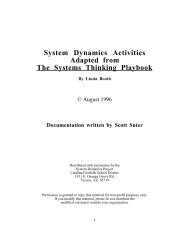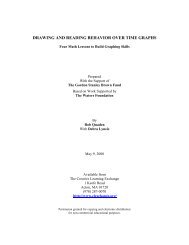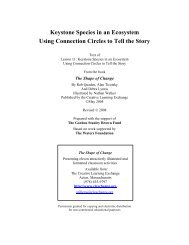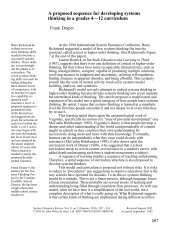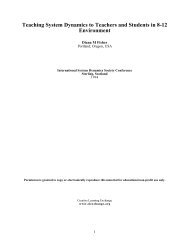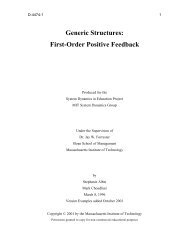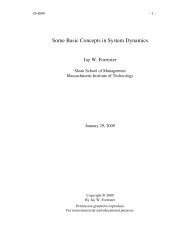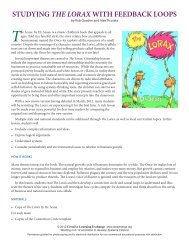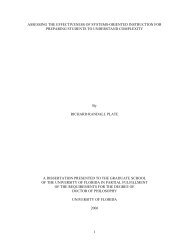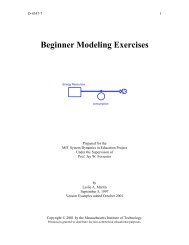An Animal Farm Physical Simulation
An Animal Farm Physical Simulation
An Animal Farm Physical Simulation
- No tags were found...
You also want an ePaper? Increase the reach of your titles
YUMPU automatically turns print PDFs into web optimized ePapers that Google loves.
Integration Areas: This would blend very well with Social Studies. The RussianRevolution, obviously, would be an excellent tie-in, but any study of tyranny and/orinequality would lend itself to this simulation.Materials needed for the lessonMaterials• Building supplies: Paper, tape, scissors, staplers, cardboard, ribbon, boxes, glue,paper tubes, poster board, crayons, rubber bands, twist-ties, butcher paper, etc.• Paper or plastic grocery bags for the supplies• Students will need journal/notebook paper and a pen/pencilMedia• overhead transparencies• overhead pensEquipment• overhead projector• video camera to film simulation (optional)Preparation1. The teacher needs to spilt the students into heterogeneous groups, based on classsize, that fall into three categories, chocolate, vanilla, and strawberry. For a class sizeof 25 to 30, six groups were made with two in each category. The teacher shouldconsider the personality and maturity level of these students as he/she splits theminto groups. For example, an emotionally disabled student should not be in theStrawberry group, the group that is treated most unfairly. Students who are betterequipped to handle stress will best thrive in this group.2. The desks should be moved into islands, with a back table serving as the “supplystore.” Tape cards to the desks that list the names of the students in the group.3. The teacher needs to gather all of the building materials prior to class and have themsorted into bags according to the three categories BEFORE the students arrive.4. The journal questions to which the students will respond should be written, butconcealed, on either the chalkboard or on an overhead transparency.Background InformationThe teacher should have a working knowledge of BOTGs and the Success to theSuccessful archetype. Daniel H. Kim’s Systems Archetypes, published by PegasusCommunications in 1992, does an excellent job of explaining the archetype.ActivitiesThe <strong>Simulation</strong>1. As the students enter the room, have them find their groups according to the cardstaped to the tables. The students, placed in six prearranged groups, will be askedto build a windmill. The teacher will explain that windmills play a pivotal roll in thebook <strong>An</strong>imal <strong>Farm</strong>. The students will be told that only the best windmill will get fullpoints and that the project is worth fifty points (this grading system is part of thesimulation and will not be used to determine any part of the students' actual grades).The students may only use the materials supplied to each group. Stress that thegroups cannot share materials. If the students want extra materials, they must sendONE representative to the “store,” where that person may request extra suppliesfrom the “store owner” (teacher).3



